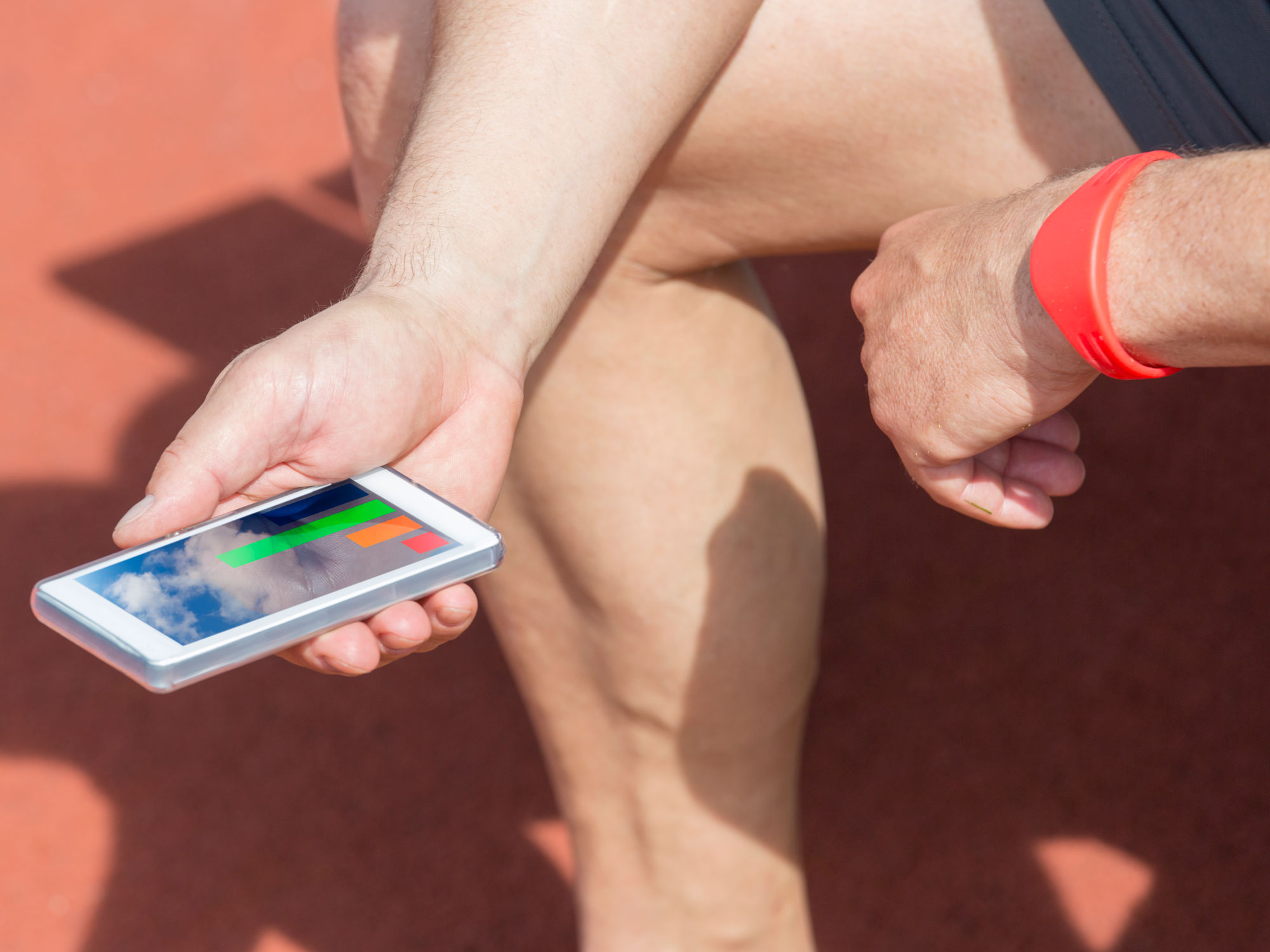Get Easy Health Digest™ in your inbox and don’t miss a thing when you subscribe today. Plus, get the free bonus report, Mother Nature’s Tips, Tricks and Remedies for Cholesterol, Blood Pressure & Blood Sugar as my way of saying welcome to the community!
Ditch the gadgets for simple basics that work

We all want fast results with minimal effort. We expect the best food in the shortest of time, the fastest route in less traffic, and the best outcomes from the least effort. This is especially true when it comes to health and wellness, rehab and recovery.
Have you seen the infomercials? They’re stacked with fitness programming featuring everything from abdominal isolation and electro-stimulation devices — to thigh strengthening gadgets and fitness equipment — not to mention the supplements heralded to burn calories and fat fast.
But all this convenience comes at a cost: It doesn’t work and it’s expensive! Here’s what I’m talking about…
Quantifying yourself
Trackable fitness and wellness devices, like the FitBit and blood pressure aps, are becoming more popular. At-work fitness “furniture” like treadmills desks and under-desk foot pedals, are also increasing in popularity. A movement has even emerged known as the “quantified self,” populated by people who utilize such devices to quantify their wellness.
Basically, with the help of such aps and devices people would be able to better track and quantify their fitness and wellness behaviors, like sleep-time, number of steps takes in a day, blood pressure readings and calories consumed.
This sounds great, except research shows them to be more a waste of time and money than anything else…
The basic problem
The basic problem is that the American lifestyle is not build on wellness, but on convenience, consumption and expectation of fast returns on small investments. Some of us are just so lazy we want — and even expect at times — a machine to do our wellness work for us.
On the other hand, some of us are just too busy to exercise and eat right on a regular basis. I have been in both camps at various times, and regret having allowed myself to go to either place.
Machines and supplements are not the bane of a healthy society. Indeed, we need them and they play a wonderful role when used correctly. But sometimes, even when used correctly, fitness devices just don’t hold up to their promises, and for those who fall into one of the two camps above, this creates a real problem.
Not to mention… the fitness devices need to be worn, charged, referenced, update and… yikes… actually USED. Who hasn’t purchased a treadmill only to hang laundry over it?
Fitness trackers aren’t working
An article recently published in the journal JAMA reveals good news for fitness gadet companies — but not you.
Evidence just does not support the “tracking” or “benefits” of fitness trackers, despite sales heading toward $50 billion by 2018. Lots of people are using them, but the results aren’t holding up.
For the study researchers put a dozen fitness devices that are worn on the body to the test, including the most popular Fitbit and Jawbone brands. Results of the 12 devices were compared against two “gold standard” research techniques known as the metabolic chamber method and the doubly-labeled water (DLW) method. There were 19 study participants, and each wore all 12 devices while undergoing the two gold standard methods. The devices and methods were then used to calculate energy expenditure.
The results were stunning. Researchers concluded that “most wearable devices do not produce a valid measure of total energy expenditure.” What’s more each device tracked their components differently, not producing a similar number from device to device even though they were worn at the same time by the same person!
In response to the study, Michael Joyner, MD of the Mayo Clinic in Rochester, MN, told MedPageToday, “There is little evidence that extreme monitoring improves outcomes” or that “these devices are going to motivate long term behavior change.”
And it’s not just fitness trackers that don’t work as advertised, but blood pressure aps too, according to a new paper on the site CardioBrief, titled “Best Selling Smartphone Blood Pressure App Gave Wrong Results.”
Standing desks also a waste of money
Another recent study published in The Cochrane Library looked at the efficacy of another new movement: work-related fitness devices to get workers off their seats and standing. Great idea for overcoming workplace sedentary days and helping people stand and walk while at work. But this idea, too, was not executed well and has become an epic fail.
For the study, researchers reviewed 20 studies that looked at the effects of standing desks on employee wellness. And they found “very little evidence” of them working in the short run and “no evidence whatsoever” that they helped in the long run.
Back to basics
So what all this tells me is this: The cornerstones of wellness are simply “diet and exercise.” Sleep quality and stress reduction form the other cornerstones to make a wellness foundation whose walls can go as high as you can take them.
Relying on gimmicks, even fancy high-tech ones, does not work. Why? Because they are proven not to work. What’s more, you still have to wear them, manage them, charge them, and use them. And if you’re willing to add all these new elements into your life to save time, you might as well skip them and get return to basics.
The best advice I have is to release reliance on outside devices, and instead make a personal commitment to lead a wellness lifestyle. And you don’t need to track everything; just do them as often as you can. This means getting cardiovascular exercise by walking, jogging, jumping rope, using a rebounder, swimming, rollerblading… you get the picture — just move. Pick one that is fun for you (you’re more likely to stick with it) and do it as often as you can.
Work too much? Then park at the other end of the lot and walk to the office… or the mall… or to school. Also, take the stairs as often as possible, skipping the elevator as you are able. Join a class for yoga, tai chi or aerobics, as fitness in groups is motivating and we are more apt to stick to a schedule when others expect us to be there.
Eat fresh, whole foods as close to their original condition as possible. Drink plenty of water. Avoid all those packaged and prepared foods, especially the ultra-processed and fast foods. Sleep well at night and breathe deeply five times every hour of the day.
These simple things can lead you into a wellness lifestyle that is not dependent on devices and gimmicks. And over times your habits will change and your health will improve. And the next time you have a physical or medical exam of some kind, the difference should be evident.












